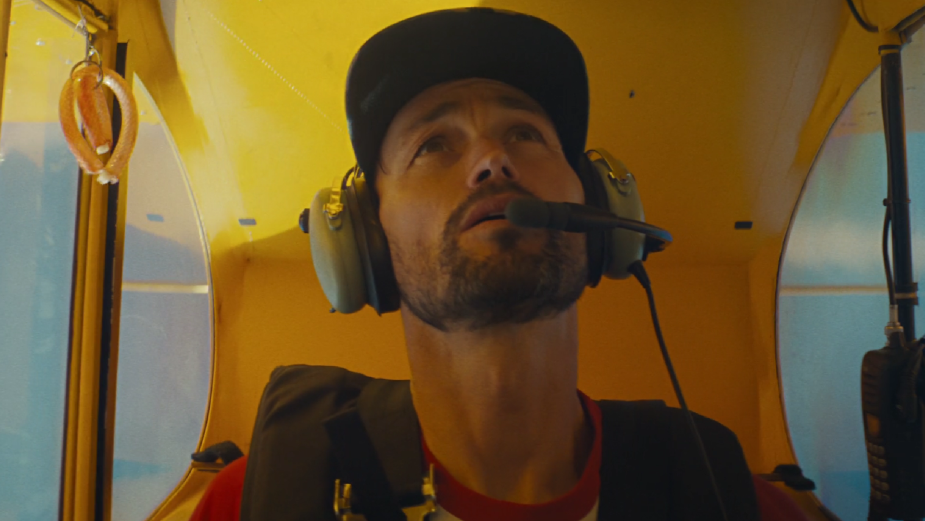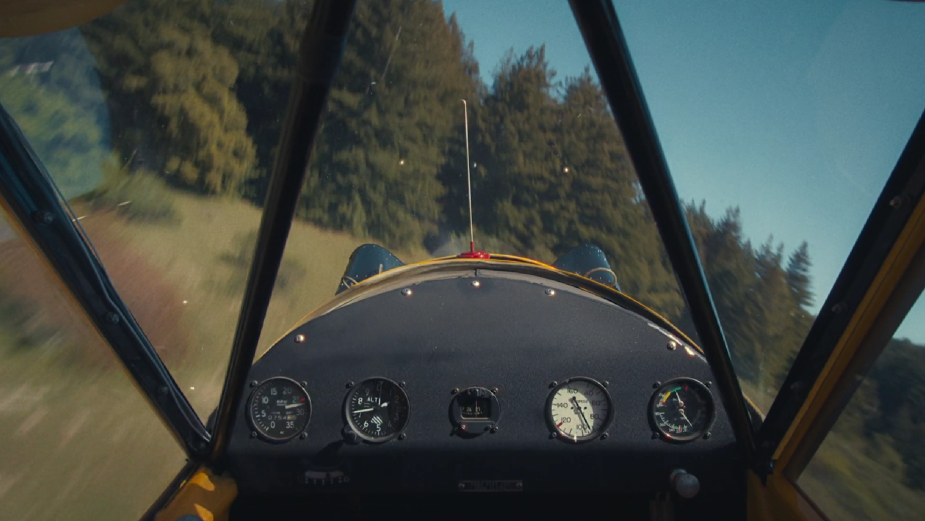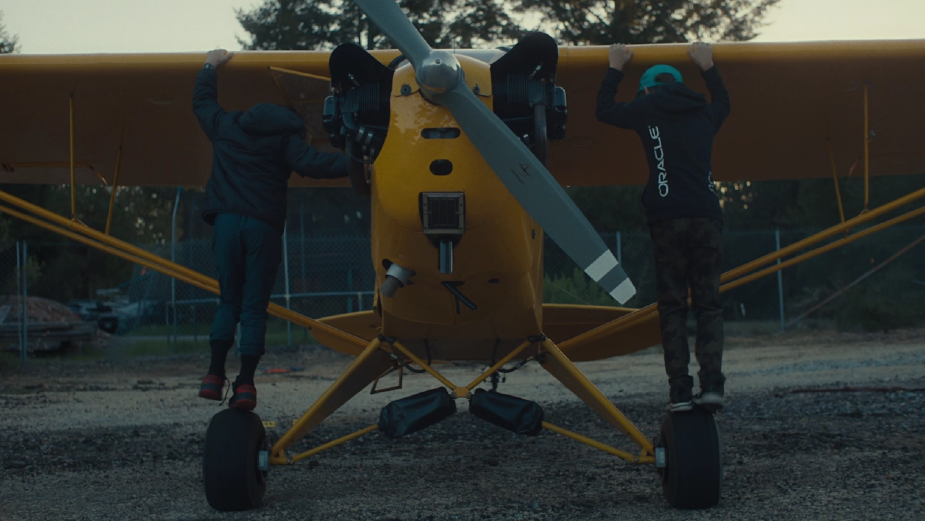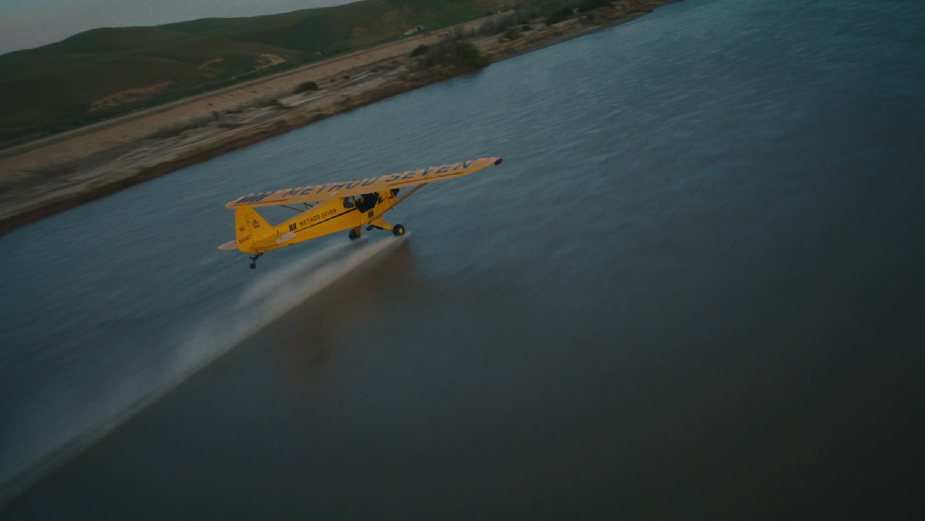
LBB Film Club: 26,000 Days

Named for the average number of days a person can expect to live, the documentary ‘26,000 Days’ tells the death-defying story of Eric Tucker, a second-generation airshow pilot who specialises in deadstick flying - performing acrobatic routines with his engine switched off. A dedicated family man and cancer survivor, the film explores the duality within Eric’s life as he confronts his own mortality, not just as a risk-taking pilot, but as a father and philosopher too.
Commercial director, DoP and pilot, Henry Behel shot the film, teaming up with frequent collaborator Mark Camperell, founder and creative director at Empty Sea Audio, to create a sonic experience that is just as intense as the aerial stunts on display. This recently earned the film 'Best Of Festival' at 5Point Adventure Film Festival, voted for by the jury out of around 40 outdoor-focused shorts.
Remembering their first project together - a film for 2018’s Central Coast Airfest - Henry says, “Mark’s designs steal the show. I’ve lost count of how many people have reached out not to tell me how good the film is, but how good the mix is! I most admire his commitment to authenticity - there were around 30 different types of aeroplanes in that first film and they all sounded exactly right, and layered with shocking intensity. He goes above and beyond in ways that always surprise me.”
Also reflecting on his introduction to the world of daredevil pilots, Mark adds, “It was like nothing I’d ever done before. Fast-paced, hard-cutting, constant adrenaline. It was like a movie trailer but for an airshow. I was floored. The shots Henry was getting on his budget were just incredible. It was a dream project for a sound designer from an inspirational standpoint.”
This event six years ago is, in fact, where Henry met the subject of their latest collaboration. Seeing Eric perform his deadstick act and land his plane on top of an ambulance (yes, an ambulance), Henry and Mark instantly knew they wanted to capture the pilot’s terrifying show in a way never seen before.

“I love aviation. I’m captivated by it every day… It’s a wonderful testament to human ingenuity,” says Mark. “When I first saw Eric’s act, I was like ‘wait… What?! He does this on purpose?’. You’ve got a functioning aeroplane that a guy decides to essentially turn into a glider. These things are designed to stay in the air, so no big deal, right? Oh, but you’re gonna do aerobatic manoeuvres without the engine?! Now I’m not just amazed, I’m mesmerised. I’m terrified.”
However, after meeting Eric’s family, delving into his worldview, and discovering his experience with testicular cancer aged 25, a more intimate and philosophical story also emerged.
“Hearing Eric drop that bomb changed the context of everything he had told me in our interviews,” says Henry. “His relationship with death isn’t theoretical - he confronted it very directly. [In the film] he says: ‘The idea of dying really soon… I feel like you’re shocked into the present moment of living’. Years later, he’s doing an airshow act that makes him come face to face with death in every performance. It was too poetic not to draw a connection. He seems to confront death near-constantly in order to live a more full, more present life. That became one of the central themes of the film.”

Going deeper than “just cool flying”, the documentary delves further into Eric’s vibrant life which, away from the cockpit, is filled with a multitude of ideas and interests, from survival theory to family, meditation and more. “One day, Eric sent me a ‘death poem’ he had written,” says Henry. “He told me this tradition has its origins in Zen Buddhism and is essentially a reflection on the meaning of one’s life, written in the moment before death. Like a defeated samurai before committing seppuku.”
“I was struck by the duality of Eric, a man who declares he will live to be 125, spending all this thought and time on the meaning of his life, as if it could be taken from him at any moment.”
The film’s spectacular footage shows Eric dancing through the air and swooping close to the ground, caressing - quite literally, at times - the rich Californian landscapes of shorelines, woodland and open fields. The surreal cinematography was brought to life in large part by a first-person-view drone, often used for drone racing, with a RED Komodo 6K camera, and some “truly next level flying” from drone pilot Alex Vanover. The team also filmed from a small backcountry plane, which Henry flew himself, removing the baggage door to mount a Ronin 2 rig for DoP Rob Russell and operator Evan Robinson to man in-flight.

Equally important was the sound - the hum of the engine, the creaking and groaning of the plane during deadstick free-fall and the wind rushing past - all balanced with Eric’s interview dialogue and gentler noises from the glimpses into his home life.
“My goal was two-fold: Make the story beautiful and shock the audience,” says Mark. “To take them to a place they’ve never heard before and are likely never to hear again.”
“This film starts by punching you in the mouth, but then it quickly regresses into peaceful meandering through the skies and Eric’s story. It’s soft. It’s sweet. It’s vulnerable… This lulls the audience into a trance. But when we hit the apex, all bets are off. Our job was to make this sound and feel as natural as possible. So what does an unpowered plane sound like, falling gracefully and artfully from the skies above?”

To achieve this, as well as recording with a microphone inside Eric’s plane, Mark and the team at Empty Sea Audio partnered with Georgia-based Foley company PostRED. “We needed to capture the natural movement of a plane in a controlled environment. PostRED stressed out a bunch of metal containers and panelling, and gave it the proper resonance to sell the size and weight of the aircraft as it moved. In certain shots, you can see panes of glass rattling and objects in the cockpit rattling around - all of this was covered by the Foley team.”
“Next, we needed to sell the plane cutting through the air, thousands of feet up,” he adds. “We were able to process Eric’s mic and mix in some of it so we had that natural feel of the plane as it dove. We sweetened this with heavy wind sounds tied to the spatial positioning of the plane, to separate it from the windy environment surrounding us. With all of these elements in place, we performed a sonic dance, similar to Eric’s manoeuvres, with the faders to guide the plane to the ground. The biggest challenge with all of this was putting together something that pilots would hear and say, ‘Yup. Nailed it’. So far, the reception from the aviation community has been overwhelmingly positive.”

Even for some of the most experienced aviators out there, simply losing an engine - let alone performing acrobatics without one - is a true nightmare. So through these dynamic visuals and exhilarating sound design, Henry says there was an opportunity to turn this fear into awe. “I was mesmerised by Eric’s description of the sonic strangeness of flying deadstick - the rushing of wind when you build speed, then nothing but the creaking of the old airframe you hear at the top of the loop. That was the seed that became the final sequence in the film.”
This beautiful yet stomach-churning final sequence, of Eric performing eerily quiet loops without an engine, is one of Henry and Mark’s proudest achievements from the project.
“It’s so simple - just three shots and no music,” says the director. “You see him fall from high in the sky all the way down to a gentle touchdown over about a minute and a half. I wanted to frame the sequence with a bit of fear; his engine stops as we hear him say, ‘I definitely don’t want to die doing what I love’, and then we watch him begin to fall out of the sky as the wind rushes faster and faster.”

“At this point, we don’t know what’s coming,” he continues. “Is this guy just going to keep going until he hits the ground? But no - he says: ‘But I want to live doing what I love’, as he pulls the plane straight up into a perfect loop. Then you watch him dance down to the ground. Of course, I say the sequence is simple but the shots were very difficult to achieve. We needed to get in front of him to see his prop stop, then lag back to watch him fall out of the sky, then meet him again in a closeup as he got to the top of the loop, all without cutting.”
“I think we took four or five passes on that section trying to get it to feel right. The sonic choreography required to achieve that wasn’t exactly simple,” adds Mark.
“We reach the apex. The music reaches completion. Eric’s last line of dialogue lingers in our minds. We become the aircraft. We have wind wisping around us, the sound of the fuselage cutting through the airspace, the sound of the stress that’s being put on the wings, the vortices swirling past the camera. Even the sound of the propeller spinning, powerless. All of this had to be added after the fact… What you’re hearing in the deadstick sequence is pure sonic artistry.”

And throughout the film, another challenge for Mark was preserving the intimate feel of Eric’s dialogue while this unbelievable action was taking place. “This is supposed to be about an artist talking about his art form. Nice, clean, crisp, and upfront dialogue supported this direction. We had some challenges with matching up dialogue, as it was recorded on multiple days… Matching it all together seamlessly was very important so as not to bump the audience. Anything that took them out of the ‘sitting with an old friend’ feeling had to be smoothed out.”
He adds, “Eric’s understanding of his mortality is plain. We needed every word to land and resonate with the audience like he was speaking directly to us.”

Another of the pair’s favourite moments came surprisingly while filming Eric’s son, Malloy, bouncing on a trampoline. As the young boy shows off some of his own acrobatics, his father buzzes overhead. “It’s so playful,” says Henry. “I’ve had many people reach out to tell me how it reminded them of the time their pilot dad buzzed over them when they were a kid. Somehow that moment is familiar to everyone with a pilot parent, and completely unique to Eric’s family.”
“What a moment! It was something so cool and unexpected,” adds Mark. “Aside from those two moments, I love the section where Eric starts up his plane and we have the drone shot following him through the fields of coastal, northern California. The music is upfront, we’ve got a bit of engine/prop [noise] going, and again the Foley sound of the plane rattling and shaking. It’s all subtle, but it fits together nicely in a way that’s sweet and playful.”

Reflecting on what they hope people will get out of the documentary and how spending time with Eric influenced their own creative and philosophical processes, Henry says, “I hope people will remember what is meaningful to them, the way that flying and family are meaningful to Eric. I hope they will spend more of their ‘26,000 Days’ doing those things. I hope that for myself as well. I love what I do, but I don’t do enough flips on trampolines.”
“My hope is that people see this piece and realise that they’re watching an artist at work,” says Mark. “The aircraft is his brush and the sky is his palette. But the connection and joy that’s shown in the moments with family; being together and creating memories, encouraging one another to explore new things, experience the world, and find out what makes them tick… Powerful stuff!”












